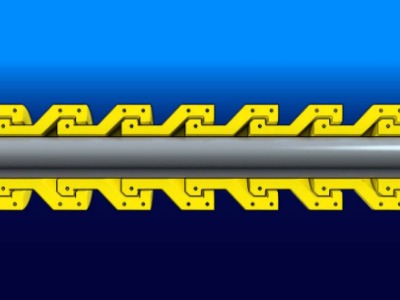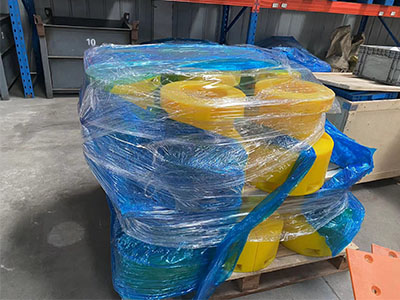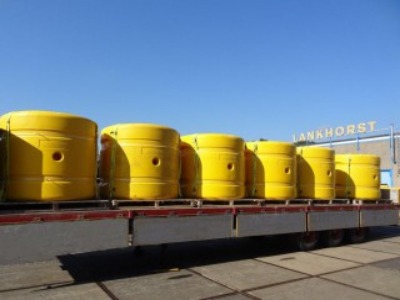Production Process of Subsea Hose Bend Restrictor
The subsea hose bend restrictor, also known as a bending restrictor or offshore bending limiter, is a vital component used to protect subsea hoses and cables from damage caused by over-bending. These restrictors are widely used in offshore wind power, oil and gas platforms, and subsea pipeline systems to ensure the structural integrity and long-term performance of critical infrastructure.
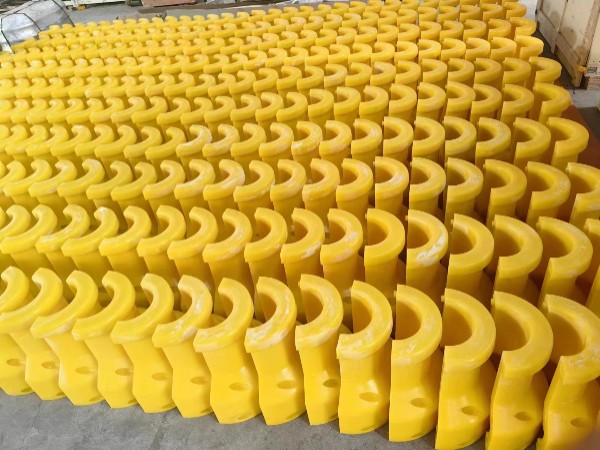
Polyurethane bend restrictor manufacturing process
Chinese manufacturers have developed advanced production techniques for polyurethane hose bend restrictors, ensuring durability, precision, and efficiency. The production process typically includes:
Design & engineering
Each restrictor is custom-designed based on the cable or hose diameter, minimum bend radius, and environmental load conditions. CAD modeling ensures accurate interlocking segment geometry.
Material selection
High-performance marine-grade polyurethane (PU) is selected for its excellent mechanical strength, resistance to seawater corrosion, UV stability, and flexibility. Additives may be included for anti-aging and flame resistance.
Mold fabrication
Precision molds are CNC-machined to create the unique vertebra-style segments. These molds are critical for consistent interlock functionality and product reliability.
Injection or casting
Polyurethane is either injected or cast into the mold under controlled temperature and pressure. This ensures strong molecular bonding and uniform density across each segment.
Curing & demolding
The restrictor segments are cured in controlled environments to stabilize their mechanical properties. Once cured, they are removed from the molds and inspected.
Assembly & testing
Segments are interlocked and tested for proper articulation, minimum bend radius compliance, and mechanical strength under simulated offshore conditions.
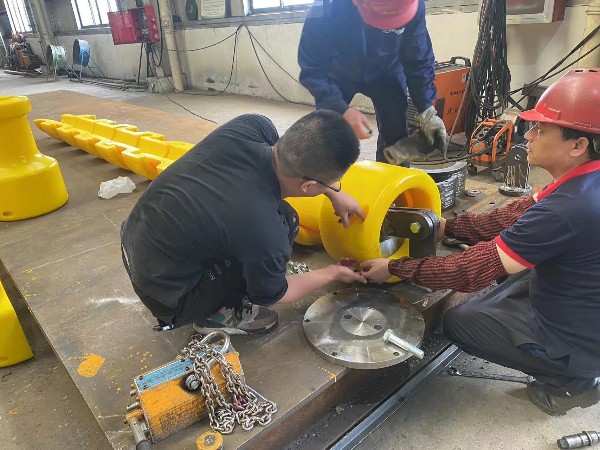
Advantages of Chinese bend restrictor manufacturers
Cost-effective production: China’s large-scale manufacturing capabilities reduce unit costs without compromising quality.
Custom solutions: Manufacturers can customize designs for various hose and cable specifications used in global offshore projects.
Fast turnaround: Short lead times due to integrated supply chains and advanced equipment.
Export-ready standards: Products comply with international certifications and offshore engineering requirements.
Experienced suppliers: Many Chinese manufacturers have years of experience serving offshore wind farms and subsea oil platforms worldwide.
The production of polyurethane subsea hose bending restrictors in China reflects a balance of advanced engineering, efficient manufacturing, and international quality standards. Whether for cable protection at J-tube exits or seabed transitions, partnering with a Chinese manufacturer ensures cost-effective, durable, and tailored offshore solutions.

